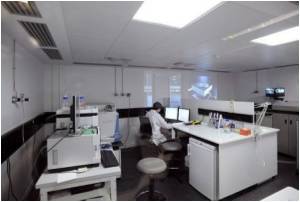
The figures come from Cancer Statistics 2010, published early online in CA: A Cancer Journal for Clinicians. The report and its consumer version, Cancer Facts & Figures 2010, include the estimated numbers of new cancer cases and deaths for 2010. Society epidemiologists predict there will be 1,529,560 new cancer cases (789,620 in men and 739,940 in women) and 569,490 cancer deaths (299,200 in men and 270,290 in women) in the United States in 2010.
Other highlights of Cancer Statistics 2010 include:
Cancers of the lung, prostate, and colorectum in men and cancers of the lung, breast, and colorectum in women continue to be the most common fatal cancers. These four cancers account for half of the total cancer deaths among men and women.
Among men, cancers of the prostate, lung, and colon will account for just over half (52 percent) of all newly diagnosed cancers. Prostate cancer alone will account for one in four (28 percent, 217,730 cases) of all cancer diagnoses in men. About nine in ten of these new cases of prostate cancer are expected to be diagnosed at local or regional stages, for which five-year relative survival approaches 100 percent.
The three most commonly diagnosed types of cancer among women in 2010 will be cancers of the breast, lung, and colon, accounting for 52 percent of cancer cases in women. Breast cancer alone is expected to account for 28 percent (207,090) of all new cancer cases among women.
Advertisement
Death rates for all cancer sites combined decreased 2 percent per year from 2001 to 2006 in males and 1.5 percent per year from 2002 to 2006 in females.
Advertisement
Lung cancer incidence rates have been declining in men by 1.8 percent per year since 1991 and appear to be leveling off in women after increasing for many decades.
Colorectal cancer incidence rates decreased markedly from 1998 through 2006, by 3 percent per year in males and by 2.2 percent per year in females.
Female breast cancer incidence rates decreased by 2 percent per year from 1999 to 2006. However, close inspection of rates by individual year shows that after a 6 percent decrease from 2002 to 2003 (following publication of the Women’s Health Initiative), incidence rates from 2003 to 2006 remained relatively unchanged.
Among males under age 40 years, leukemia is the most common fatal cancer, while cancer of the lung and bronchus predominates in men aged 40 years and older.
Among females, leukemia is the leading cause of cancer death before age 20, breast cancer ranks first at ages 20 to 59, and lung cancer is the leading cause of cancer death at ages 60 and older.
Lung cancer surpassed breast cancer as the leading cause of cancer death in women in 1987, and is expected to account for 26 percent of all female cancer deaths in 2010
African American men have a 14 percent higher overall incidence rate and 34 percent higher overall death rate than white men. African American women have a 7 percent lower incidence rate, but a 17 percent higher death rate than white women for all cancer sites combined.
Among other racial and ethnic groups, cancer incidence and death rates are lower than those in whites and African Americans for all cancer sites combined and for the four most common cancer sites.
Cancer is the second leading cause of death among children between ages one to 14 years in the U.S., after accidents. The five-year relative survival rate among children for all cancer sites combined improved from 58 percent for patients diagnosed in 1975 to 1977 to 81 percent for those diagnosed in 1999 to 2005.
“This report is yet more proof we are creating a world with more birthdays,” said John R. Seffrin, Ph.D., chief executive officer of the American Cancer Society and its advocacy affiliate, the American Cancer Society Cancer Action Network (ACS CAN). “We will build on our progress in the fight against cancer through laws and policies that increase access to cancer prevention, early detection, and treatment services, and with a sustained federal investment in research designed to find breakthroughs in the prevention and treatment of the most deadly forms of cancer.”
The expected numbers of new cancer cases and cancer deaths should be interpreted with caution because these estimates are based on statistical models and may vary considerably from year to year. Not all changes in cancer trends can be captured by modeling techniques and sometimes the model may be too sensitive to recent trends, resulting in over- or under-estimates. For these reasons, the estimates should not be compared from year-to-year to determine trends; age-standardized cancer incidence and death rates are the best way to monitor changes in cancer occurrence and death.
Despite these limitations, the American Cancer Society’s estimates of the number of new cancer cases and deaths in the current year provide reasonably accurate estimates of the burden of new cancer cases and deaths in the United States. Such estimates will assist in continuing efforts to reduce the public health burden of cancer.
Source-Medindia












